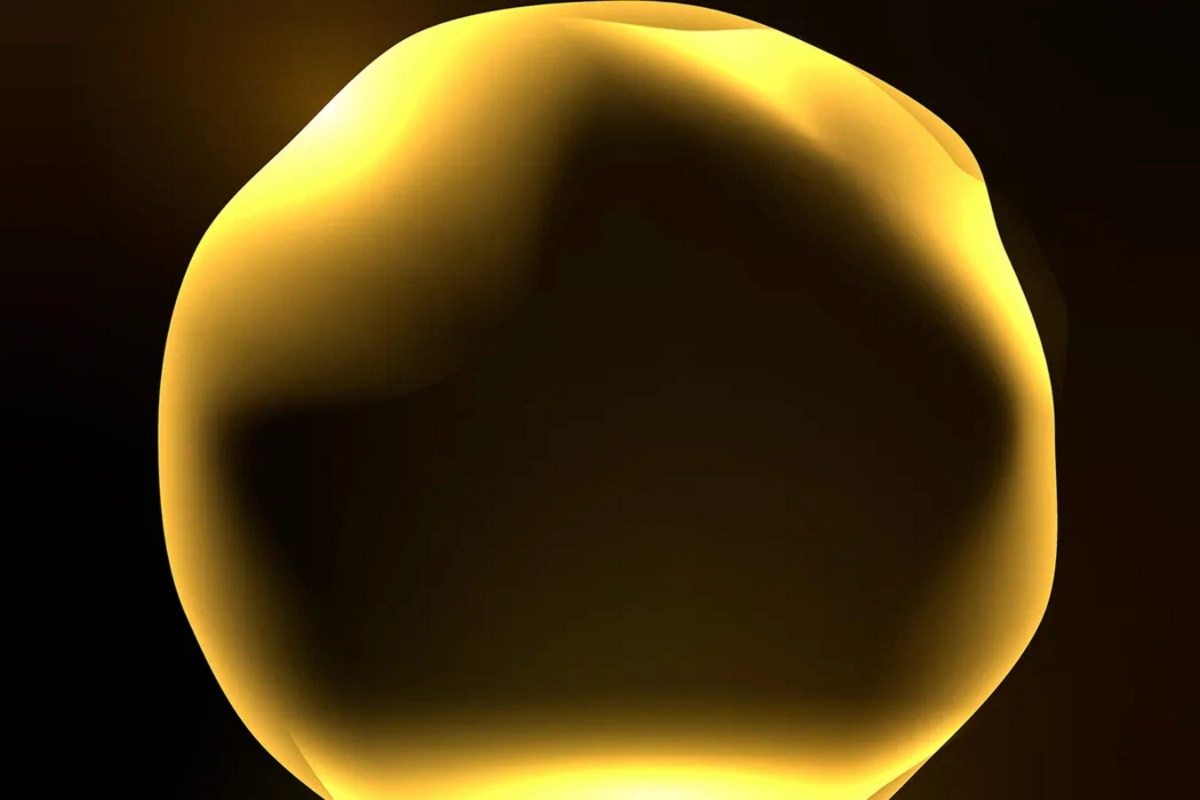The mysterious golden "egg" from the ocean floor has excited scientists

At a record depth of about 3300 meters below the ocean surface near the coast of Alaska, the NOAA Ocean Exploration research team made an intriguing discovery – a mysterious golden sphere attached to an underwater rock. This unusual find instantly attracted the attention of the scientific community and raised many questions.
The mysterious object, discovered during a routine dive, has a diameter of approximately 10 centimeters and features an unusual hole on one side. It was found attached to a rock covered with white sponges, making its location even more remarkable. Specialists observing the find in real time could not immediately identify the object, proposing various theories – from the egg shell of an unknown marine inhabitant to the remains of a sponge or coral.
During the live broadcast of the dive, one of the scientists admitted with undisguised surprise: "I don't know what to do with this," while his colleague suggested that "something was either trying to get in or trying to get out." The atmosphere of scientific curiosity mixed with slight apprehension when another researcher jokingly noted: "This looks like the beginning of a horror movie," expressing hope that further study of the find would not present unpleasant surprises.
Among the more substantiated hypotheses is the version that the golden sphere could be an egg from which an organism unknown to science has already hatched. Deep-sea ecologist Kerry Howell from Plymouth University (UK) shared his observations: "We decided it might be an egg, based on its texture. It's fleshy and doesn't have obvious anatomy. It has a hole indicating that something might have entered or exited. Although this egg doesn't look like any I've ever seen."
To study the physical properties of the object, scientists used the robotic arm of the underwater vehicle, carefully touching it and determining that it has a soft consistency. After preliminary examination, the sphere was carefully extracted using a special suction device for further laboratory analysis. Of particular interest is the fact that the object was discovered as a single specimen, which is atypical for eggs of marine creatures, which are usually laid in clutches.
If further research confirms the hypothesis that the found sphere is indeed an egg, this could significantly change our understanding of the reproductive strategies of deep-sea species. The uniqueness of the find poses new questions for scientists about the diversity of life in the ocean depths and opens prospects for further research.
The ocean depths remain one of the least studied environments on our planet. Extreme conditions – colossal pressure, low temperatures, and inaccessibility – create serious obstacles for researchers. However, modern technologies, including remotely operated underwater vehicles, are gradually helping scientists uncover the secrets of this mysterious world.
Research coordinator Sam Candio from NOAA Ocean Exploration summarized the situation: "Don't the ocean depths seem amazingly strange? Despite the ability to collect the 'golden sphere' and deliver it to the ship, we still cannot identify it, except for the conclusion that it is of biological origin."
Similar News
Zelensky: Ready to support holding elections during martial law
President of Ukraine Volodymyr Zelensky declared readiness to support elections during martial law, provided that security is ensured and necessary legislative...




 Azərbaycanca
Azərbaycanca  По-русски
По-русски  English
English 





